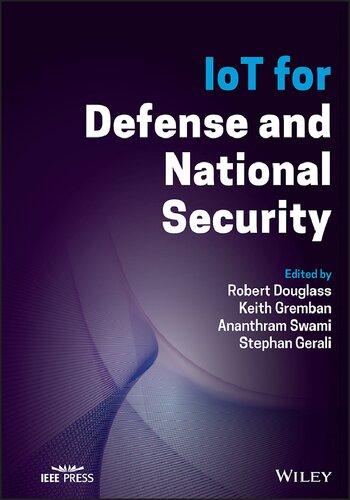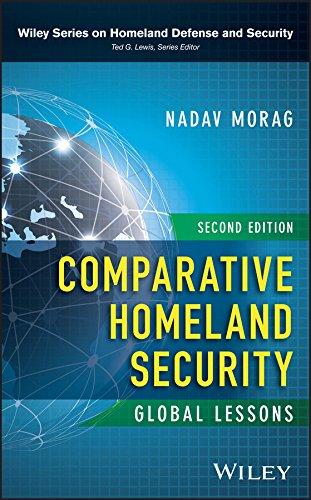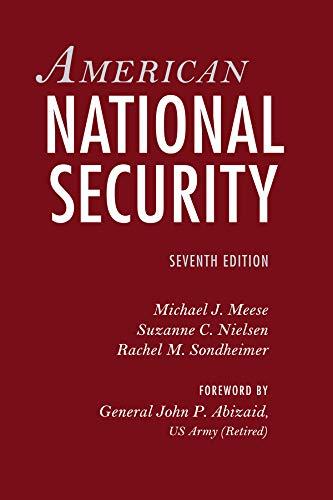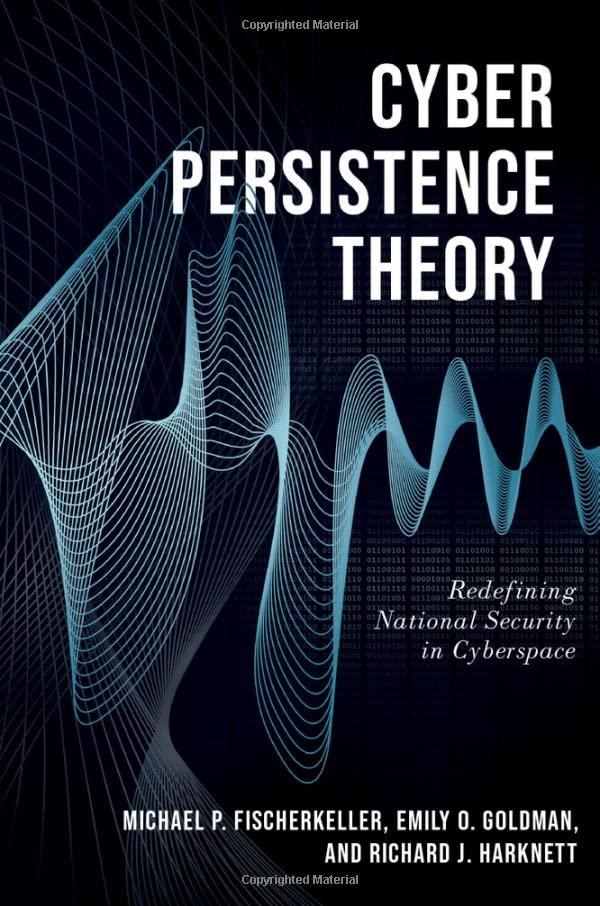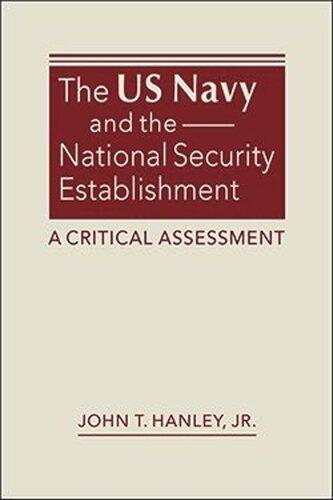IoTforDefenseandNationalSecurity
Editedby
RobertDouglass AltaMontes,Inc.,USA
KeithGremban UniversityofColoradoSchoolofLaw,Boulder,CO,USA
AnanthramSwami ArmyResearchLaboratory,Adelphi,MD,USA
StephanGerali LockheedMartin,Inc.,Bethesda,MD,USA
Copyright©2023TheInstituteofElectricalandElectronicsEngineers,Inc.Allrightsreserved.
PublishedbyJohnWiley&Sons,Inc.,Hoboken,NewJersey. PublishedsimultaneouslyinCanada.
Nopartofthispublicationmaybereproduced,storedinaretrievalsystem,ortransmittedinanyformorbyany means,electronic,mechanical,photocopying,recording,scanning,orotherwise,exceptaspermittedunderSection 107or108ofthe1976UnitedStatesCopyrightAct,withouteitherthepriorwrittenpermissionofthePublisher,or authorizationthroughpaymentoftheappropriateper-copyfeetotheCopyrightClearanceCenter,Inc.,222 RosewoodDrive,Danvers,MA01923,(978)750-8400,fax(978)750-4470,oronthewebatwww.copyright.com. RequeststothePublisherforpermissionshouldbeaddressedtothePermissionsDepartment,JohnWiley&Sons, Inc.,111RiverStreet,Hoboken,NJ07030,(201)748-6011,fax(201)748-6008,oronlineathttp://www.wiley.com/ go/permission.
Trademarks:WileyandtheWileylogoaretrademarksorregisteredtrademarksofJohnWiley&Sons,Inc.and/or itsaffiliatesintheUnitedStatesandothercountriesandmaynotbeusedwithoutwrittenpermission.Allother trademarksarethepropertyoftheirrespectiveowners.JohnWiley&Sons,Inc.isnotassociatedwithanyproduct orvendormentionedinthisbook.
LimitofLiability/DisclaimerofWarranty:MATLAB®isatrademarkofTheMathWorks,Inc.andisusedwith permission.TheMathWorksdoesnotwarranttheaccuracyofthetextorexercisesinthisbook.Thiswork’suseor discussionofMATLAB®softwareorrelatedproductsdoesnotconstituteendorsementorsponsorshipbyThe MathWorksofaparticularpedagogicalapproachorparticularuseoftheMATLAB®software.Whilethepublisher andauthorhaveusedtheirbesteffortsinpreparingthisbook,theymakenorepresentationsorwarrantieswith respecttotheaccuracyorcompletenessofthecontentsofthisbookandspecificallydisclaimanyimpliedwarranties ofmerchantabilityorfitnessforaparticularpurpose.Nowarrantymaybecreatedorextendedbysales representativesorwrittensalesmaterials.Theadviceandstrategiescontainedhereinmaynotbesuitableforyour situation.Youshouldconsultwithaprofessionalwhereappropriate.Further,readersshouldbeawarethatwebsites listedinthisworkmayhavechangedordisappearedbetweenwhenthisworkwaswrittenandwhenitisread. Neitherthepublishernorauthorshallbeliableforanylossofprofitoranyothercommercialdamages,including butnotlimitedtospecial,incidental,consequential,orotherdamages.
Forgeneralinformationonourotherproductsandservicesorfortechnicalsupport,pleasecontactourCustomer CareDepartmentwithintheUnitedStatesat(800)762-2974,outsidetheUnitedStatesat(317)572-3993orfax(317) 572-4002.
Wileyalsopublishesitsbooksinavarietyofelectronicformats.Somecontentthatappearsinprintmaynotbe availableinelectronicformats.FormoreinformationaboutWileyproducts,visitourwebsiteatwww.wiley.com.
LibraryofCongressCataloging-in-PublicationDataAppliedfor:
HardbackISBN:9781119892144
CoverDesign:Wiley
CoverImage:©Linesformingabstractshapes–stockillustration
Setin9.5/12.5ptSTIXTwoTextbyStraive,Chennai,India
Contents
ListofContributors xix
Introduction:IoTforDefenseandNationalSecurity xxv RobertDouglass
Section1Introduction:Vision,Applications,andOpportunities 1 StephanGerali
1InternetofBattlefieldThings:Challenges,Opportunities,andEmerging Directions 5 MaggieWigness,TarekAbdelzaher,StephenRussell,andAnanthramSwami
1.1IoBTVision 5
1.2IoBTvs.IoT 6
1.3IoBTOperationalRequirements 7
1.4AnOrganizingConcept 8
1.4.1TheMDOEffectLoop 9
1.4.2TechnicalChallenges 11
1.4.2.1CompositionalityandSynthesis 11
1.4.2.2TimelinessandEfficiency 12
1.4.2.3RobustnesstoAdversarialDisruption 12
1.4.2.4DeployabilityatthePointofNeed 12
1.5PerformantandResilientIoBTs 13
1.5.1CompositionalityandSynthesis 13
1.5.2TimelinessandEfficiency 14
1.5.3RobustnesstoAdversarialDisruption 15
1.5.4DeployabilityatthePointofNeed 16
1.6FutureDirections 16
1.6.1Multi-tenancyandMultiplicityofUse 17
1.6.2MultiplicityofFunction 17
1.6.3Non-stationarityandMultiplicityofPerturbations 18
1.6.4MultiplicityofSensingModalities 18
1.6.5MultiplicityofTime-scales 18
1.6.6Architecture 19
1.7Conclusion 19 References 20
2SensorizedWarfighterWeaponPlatforms:IoTMakingtheFogofWar
Obsolete 23
KyleBroadway
2.1Introduction 24
2.2 IoT forFirearms 26
2.3NewInsightsintotheBattlefieldProvidedby IoT 27
2.4Challengesfor IoT inSoldierWeapons 31
2.5BattlefieldChallengestoAggregatingandExfiltratingData 32
2.6ProtectionandSecurityfor IoT DataCommunication 34
2.7StateoftheArt 37
2.8Conclusion 37
References 38
3IoBTResourceAllocationviaMixedDiscreteandContinuous Optimization 39
JonathanBuntonandPauloTabuada
3.1Introduction 39
3.2LatticesandSubmodularFunctions 42
3.3ProblemFormulation 43
3.4AnEquivalentParameterization 44
3.5ReturningtoConstraints 47
3.5.1KnapsackConstraints 48
3.5.2ContinuousBudgetConstraints 49
3.6ComputationalExamples 50
3.6.1UnconstrainedOptimization 50
3.6.2Knapsack-ConstrainedAllocations 51
3.6.3ContinuousBudget-constrainedAllocations 54
3.7Conclusions 55 References 55
4OperationalizingIoTDataforDefenseandNationalSecurity 59
SteveMorganandJaimeWightman
4.1Introduction 59
4.2ProblemStatement 60
4.3Challenges 62
4.4SecurityConsiderations 64
4.5DevelopingaStrategyforOperationalizingData 65
4.6Precedence 69
4.7EndState 70
4.8Conclusion 71 References 71
5RealTimeMonitoringofIndustrialMachinesusingAWSIoT 73
StephanGerali
5.1ProblemStatement 73
5.2SolutionStatement–Overview 74
5.3SolutionStatement–EdgeComputing 74
5.4SolutionStatement–CloudConnectivity 75
5.5SolutionStatement–StreamingAnalyticsandDataStorage 76
5.6SolutionStatement–DataVisualization 77
5.7SolutionStatement–ExampleDataVisualizations 78
5.8Results 79
5.9NextSteps 79 References 80
6ChallengesandOpportunitiesofIoTforDefenseandNationalSecurity Logistics 83
GiseleBennett,WilliamCrowder,andChristinaBaxter
6.1Introduction 83
6.2LinkingIndustryandDoDUsesofIoT 84
6.3SituationalAwareness 85
6.3.1PolicyandLegalImplications 85
6.3.2ChallengesandConsiderations 86
6.4ApplicationsforDoD 86
6.4.1SituationalAwarenessofPeopleandEquipmentforMaintainabilityand Sustainability 86
6.4.2DataCollectionforReal-timeandPredictiveCBM 87
6.4.3PrepositioningandPlanningforPeopleandSupplies(Prepo-in-motion) 88
6.4.4IoTatDoDInstallations 90
6.4.4.1EnergyManagement 90
6.4.4.2InstallationsasTrainingPlatforms 91
6.4.5IoTandEmergencyResponse 91
6.4.6IoTandDisasterResponse 92
6.5ObservationsontheFuture 93 Acknowledgement 94 References 94
7DigitalTwinsforWarshipSystems:Technologies,Applicationsand Challenges 97
SaraFerreno-Gonzalez,AliciaMunin-Doce,MarcosMíguezGonzález,LucíaSantiago Caamaño,andVicenteDiaz-Casas
7.1Introduction 97
7.2ADigitalTwinArchitectureforImplementation 99
7.2.1PhysicalLevel 99
7.2.2PhysicalWorld/VirtualWorldInterface 101
7.2.3DigitalTwin 102
7.2.3.1IntegrationofFunctionalities:UserInterfaces 102
7.2.3.2SimulationModels 103
7.2.3.3DataStorageandDataLakes 106
7.2.3.4DataAnalysis,MachineLearning,andPredictiveAlgorithms 107
7.3ShipDigitalTwinImplementation 108
7.3.1PhysicalLevel 108
7.3.2PhysicalWorld/VirtualWorldInterface 109
7.3.3IntegrationofFunctionalitiesandtheUserInterface 110
7.3.4SimulationModels 110
7.3.5DataAnalysis,MachineLearning,andPredictiveAlgorithms 111 References 111
Section2Introduction:ArtificialIntelligenceandIoTforDefenseand NationalSecurity 115 RobertDouglass
8PrinciplesofRobustLearningandInferenceforIoBTs 119 NathanielD.Bastian,SusmitJha,PauloTabuada,VenugopalVeeravalli,andGunjanVerma
8.1InternetofBattlefieldThingsandIntelligence 119
8.2DimensionsofResponsibleAI 120
8.2.1ResearchChallengesinIoBTs 121
8.2.2Trust,ResilienceandInterpretability 122
8.3DetectingSurprise:AdversarialDefenseandOutlierDetection 123
8.4NovelDeepLearningRepresentation:DynamicalSystem 124
8.5RobustSecureStateEstimation 125
8.6DistributionallyRobustLearning 126
8.7FutureDirections 127
8.8Conclusion 128 References 128
9AIattheEdge:Challenges,Applications,andDirections 133 DhirajJoshi,NirmitDesai,ShyamaProsadChowdhury,Wei-HanLee,LuisBathen, ShiqiangWang,andDineshVerma
9.1Introduction 133
9.2IoTApplications 134
9.2.1VisualInspectionofAssets 135
9.2.1.1VisualRecognition 135
9.2.1.2AIOptimization 135
9.2.1.3FixedIoTSensorsvs.RIDs 135
9.2.2ThermalInspectionofAssets 135
9.2.2.1InspectionatElectricSubstations 136
9.2.2.2ProposedAutomation 136
9.2.3InspectionofAnalogMetersandGauges 137
9.2.3.1GaugeDetection 137
9.2.3.2PerspectiveCorrection 138
9.2.3.3PointerDetectionandTextRecognition 138
9.2.4OtherDefenseandCommercialUseCases 138
9.3DistributedAIArchitecture 138
9.3.1Background:CentralizedAIandEdgeAI 139
9.3.1.1CentralizedAI 139
9.3.1.2EdgeAI 140
9.3.2OpenChallengesinEdgeAI 141
9.3.3NewParadigm:DistributedAI 142
9.4Technology 143
9.4.1DataOps 143
9.4.1.1StatisticalSummaries 143
9.4.1.2DimensionalityReduction 144
9.4.1.3SamplingfromOriginalSpace 144
9.4.2ModelOps 144
9.4.2.1OODDetectionAlgorithm 145
9.4.2.2Experiments 147
9.4.3OptimizationandAdaptation 147
9.4.3.1ModelPruning 148
9.4.3.2ModelQuantization 148
9.4.3.3OtherSchemes 149
9.4.3.4Experiments:ModelOptimizationforAssetInspection 149
9.4.4FederatedLearning 149
9.4.4.1ResourceEfficiencyofFL 151
9.4.4.2PrivacyConsiderations 151
9.5ResearchDirections 152
9.5.1LearningwithResourceOptimization 152
9.5.2CollaborationAmongHumansandRobots 152
9.5.3Multi-modalLearning 153
9.5.3.1Context-basedMulti-modalSensing 153
9.5.3.2AdaptiveNavigationtoOptimizeSensing 154
9.6Conclusions 155 References 155
10AIEnabledProcessingofEnvironmentalSoundsinCommercialandDefense Environments 161
DavidWood,Jae-wookAhn,SeraphinCalo,NancyGreco,KeithGrueneberg, TadanobuInoue,DineshVerma,andShiqiangWang
10.1Introduction 161
10.1.1Challenges 162
10.1.2SystemOverview 165
10.1.3IoTAcousticsvs.SpeechRecognition 166
10.2UseCases 166
10.2.1DefenseUseCases 166
10.2.1.1PerimeterDefense 167
10.2.1.2VehicleClassification 167
10.2.1.3ActivationofOtherModalities 167
10.2.1.4FleetandFacilitiesMaintenance 168
10.2.2CommercialUseCases 168
10.2.2.1Manufacturing 168
10.2.2.2VehicleMonitoring 168
10.2.2.3AnimalHusbandry 169
10.2.2.4Healthcare 169
10.2.2.5Security 169
10.3SystemArchitecture 169
10.4Technology 171
10.4.1DataManagementandCuration 171
10.4.2ModelTrainingPipeline 173
x Contents
10.4.3Models 175
10.4.3.1ShallowModels 176
10.4.3.2DeepModels 176
10.4.3.3InferencePerformanceontheEdge 177
10.4.4AnomalyDetection 178
10.4.5ModelDrift 179
10.4.6ModelUpdate/Evolution 180
10.4.7ModelAdaptation 181
10.5Summary 182
References 183
Section3Introduction:Security,Resiliency,andTechnologyfor AdversarialEnvironments 187 AnanthramSwami
11AssurancebyDesignforCyber-physicalData-drivenSystems 191 SatishChikkagoudar,SamratChatterjee,RameshBharadwaj,AuroopGanguly, SastryKompella,andDarleneThorsen
11.1Introduction 191
11.1.1FormalMethodsforSoftwareIntensiveSystems 194
11.1.2AdaptingFormalMethodsforDataDrivenSystems 195
11.2MethodsforAssurance 196
11.2.1ToolsforInformationFreshness 196
11.2.2MethodsforDecisionAssurance 198
11.2.2.1ScenarioGenerationforCPDDSs 198
11.2.2.2ConsequenceAssessmentforCPDDSs 202
11.2.3AssuranceofInterconnectedNetworkedCPDDSs 202
11.2.3.1NetworkRepresentation 204
11.2.3.2DynamicCascadeModeling 205
11.2.3.3Multi-AgentDecisionOptimization 206
11.3DiscussionandConclusion 207 References 208
12VulnerabilitiesinIoTSystems 213 ZhengFangandPrasantMohapatra
12.1Introduction 213
12.1.1IoTSystemComponents 214
12.1.2VulnerabilitiesandThreats 215
12.1.2.1Devices 215
12.1.2.2CommunicationProtocols 216
12.1.2.3IoTApplications 216
12.1.2.4PhysicalMedium 216
12.1.2.5MobileApps 217
12.2Firmware 217
12.2.1UnprotectedNetworkServices 217
12.2.2UnprotectedFirmwareUpdating 218
12.2.3BufferOverflow 219
12.3CommunicationProtocols 219
12.3.1Wi-Fi 220
12.3.2Zigbee 221
12.3.3Z-Wave 222
12.3.4Bluetooth 222
12.3.5PhysicalLayer 223
12.3.5.1JammingAttack 223
12.3.5.2SideChannelAttack 223
12.3.6TCP/IPSuite&ApplicationLayer 224
12.4IoTApps 224
12.4.1CheckingSafetyandSecurityProperties 225
12.4.2DynamicSecurityPolicyEnforcement 226
12.4.3IoTAppSniffing 226
12.5PhysicalDependencies 226
12.6CompanionMobileApps 227
12.7Hardware 228
12.8IoTPlatforms 229
12.8.1Over-privileging 229
12.8.2DataLeakage 229
12.9Countermeasures 230
12.10Conclusions 231 References 231
13IntrusionDetectionSystemsforIoT 237
HyunwooLee,AnandMudgerikar,NinghuiLi,andElisaBertino
13.1Introduction 237
13.2Background 238
13.2.1IntrusionDetectionSystems 238
13.2.1.1PlacementofCollectors 238
13.2.1.2ArchitectureofAnalyzers 239
13.2.1.3DetectionMechanisms 239
13.2.2CharacteristicsofIoTEnvironments 240
13.2.2.1SimpleNetworkingPatterns 240
13.2.2.2DiverseNetworkProtocols 240
13.2.2.3SmallNumberofThreads 240
13.2.2.4VariousTypesofCPUArchitecturesandOperatingSystems 240
13.2.2.5ResourceConstraints 241
13.2.2.6LargeNumbersofDevices 241
13.2.2.7DynamicsandAutonomy 241
13.2.3IoT-SpecificProtocols 241
13.2.3.1IoTNetwork-layerProtocols 241
13.2.3.2IoTApplication-layerProtocols 242
13.2.4IDSinIoTEnvironment 242
13.2.4.1RelevanceofIDSinIoTEnvironment 242
13.2.4.2ChallengesforIDSesinIoTDynamicandAutonomousEnvironment 243
13.3IoTAttackScenarios 243
13.3.1AttacksfromtheInternet 243
13.3.1.1PortScanning 243
13.3.1.2Telnet/SSH/HTTPBruteforce 244
13.3.1.3SYN/ACK/UDP/HTTPFlooding 244
13.3.2IoT-specificNetwork-layerAttacks 244
13.3.2.1HelloFloodAttack 244
13.3.2.2NeighborAttack 244
13.3.2.3DISAttack 244
13.3.2.4SinkholeAttack 244
13.3.2.5WormholeAttack 244
13.3.2.6Grayhole(orSelectiveForwarding)Attack 244
13.3.3IoT-specificApplication-layerAttacks 245
13.3.3.1CONNECT/CONNACKFlooding 245
13.3.3.2CoAPRequest/ACKFlooding 245
13.4ProposedIDSesforIoT 245
13.4.1DefinitionofNormal/AbnormalBehavior 245
13.4.1.1LegitimateIPAddresses 245
13.4.1.2Threshold 246
13.4.1.3Automata 247
13.4.1.4FederatedLearning 248
13.4.2EnhancementsofML-basedDetectors 249
13.4.2.1CompressionHeaderAnalyzerIntrusionDetectionSystem(CHA-IDS) 249
13.4.2.2E-Spion 249
13.4.2.3Deeplearning-basedIDS(DL-IDS) 249
13.4.2.4MulticlassClassificationProcedure 249
13.4.2.5Discussion 249
13.4.3LightweightDetectorImplementation 250
13.4.3.1RaspberryPiIDS(RPiDS) 250
13.4.3.2PassbanIDS 250
13.4.3.3Discussion 250
13.4.4CombinationofDiverseDetectors 250
13.4.4.1IDSwithGame-theoreticMethodology 251
13.4.4.2HybridIntrusionDetectionandPreventionSystem(IDPS) 251
13.4.4.3IDPS 251
13.4.4.4Discussion 251
13.4.5OptimalDetectorSelection 252
13.4.5.1Kalis 252
13.4.5.2Reinforcementlearning-basedIDS(RL-IDS) 252
13.4.5.3Discussion 252
13.5ResearchDirections 252
Acknowledgement 254 References 255
14BringingIntelligenceattheNetworkDataPlaneforInternetofThings Security 259
QiaofengQin,KonstantinosPoularakis,andLeandrosTassiulas
14.1Introduction 259
14.2RelatedWork 262
14.3SystemDesign 263
14.3.1ArchitectureoftheFRGApproach 263
14.3.2ArchitectureoftheBNNApproach 264
14.4ProblemModeling 266
14.4.1ClassificationwithHeaderBytes 266
14.4.2ClassificationwithHeaderFields 266
14.5AlgorithmsandLearningModels 267
14.5.1FRGApproach:Overview 267
14.5.2FRGStage1:NeuralNetworkStructure 268
14.5.3FRGStage2:HeaderFieldDefinition 269
14.5.4BNNApproach 271
14.6EvaluationResults 271
14.6.1PerformanceofFRGApproach:SetupandMetrics 271
14.6.2PerformanceofFRGStage1(Classification) 273
14.6.3PerformanceofFRGStage2(HeaderFieldDefinition) 275
14.6.3.1ProfilesofImportanceScores 275
14.6.3.2ImpactofHeaderFieldsonAccuracy 276
14.6.3.3ImpactofHeaderFieldsonCosts 276
14.6.3.4OptimalSelectionofHeaderFields 277
14.6.4PerformanceofBNNApproach 278
14.6.4.1MainTakeaways 280
14.7ConclusionsandFutureChallenges 280 Acknowledgment 281 References 281
15DistributedComputingforInternetofThingsUnderAdversarial Environments 285 GowriSankarRamachandran,LuisA.Garcia,andBhaskarKrishnamachari 15.1Introduction 285
15.2DistributedComputingforIoTinDefenseApplications 287
15.2.1OverviewofRequirements/Challenges 287
15.2.2CharacteristicsofDistributedIoBTApplications 287
15.3ThreatModel 288
15.3.1SystemDescription 288
15.3.2Threats 289
15.3.2.1GoalsofanAdversary 289
15.3.2.2AttackVectors 290
15.4FrameworksforDistributedComputing 291
15.4.1ResourceandTaskManagementinDistributedComputing 291
15.4.2GatheringResourcesinAdversarialEnvironments 294
15.5EstablishingTrustinAdversarialEnvironments:SolutionsandOpen Opportunities 295
15.5.1VerifiableComputation 295
15.5.1.1HomomorphicEncryption 296
15.5.1.2Proof-basedVerification 296
15.5.1.3TrueBit 297
15.5.1.4Perlin 297
15.5.1.5OpenOpportunities 297
15.5.2ByzantineFault-tolerantDistributedComputing 298
15.5.2.1OpenOpportunities 299
15.5.3GreyResourceAccumulation 300
15.5.3.1OpenOpportunities 301
15.5.4CryptographicApproaches 301
15.5.4.1OpenOpportunities 302
15.5.5SecureComputationwithTrustedExecutionEnvironments 302
15.5.5.1OpenOpportunities 302
15.6Summary 302
Acknowledgment 303
References 303
16EnsuringtheSecurityofDefenseIoTThroughAutomaticCode Generation 307
M.DouglasWilliamsandRobertDouglass
16.1TheChallengeofIoTinDefenseandNationalSecurityApplications: TheChallenge 307
16.2Solutions 308
16.2.1ControltheInterfacesBetweenIoTElements 309
16.2.2ProblemswithTraditionalApproachestoMalwareProtection 309
16.2.3TraditionalApproachestoSecurity:Hardware 309
16.2.4TraditionalApproachestoSecurity:Simulation 310
16.2.5TraditionalApproachestoSecurity:Software 310
16.2.5.1CodingWeaknesses,SoftwareVulnerabilitiesandMalware 310
16.2.5.2TraditionalApproachesforProtectingIoTSoftware 311
16.2.5.3ImprovementsonTraditionalSoftwareApproaches 311
16.2.6Auto-codeGenerationforVulnerability-freeIoT 312
16.2.6.1ApplyingAuto-codeGenerationSelectivelyforIoTNetworkSecurity 312
16.2.6.2APracticalApproachtoGeneratingVulnerability-freeIoTNetworks 312
16.3AutomaticCodeGeneration 312
16.3.1CoreAuto-generationEngine 314
16.3.2SemanticDefinitionsofSoftwareFunctions 314
16.3.3FormalMethodsforVerifyingSemanticDefinitions 316
16.3.3.1StaticAnalysisforVerifyingCodeGeneratorProducesVulnerability-freeCode 317
16.3.4AnExtendedExample:AutomaticGenerationofRouterSoftware 319
16.4IoTInterface-codeIssuingAuthority 319
16.4.1RoleofIoTInterface-codeAuthority(IICA) 320
16.4.2PrecedentsandExamplesandaProposedIoTInterfaceCodeAuthority 320
16.5Conclusions 321
References 322
Section4Introduction:CommunicationsandNetworking 325 KeithGremban
17LeveragingCommercialCommunicationsforDefenseIoT 327 KeithGrembanandPaulJ.Kolodzy
17.1Introduction 327
17.2KeyDifferencesBetweenDefenseandCommercialCommunications Requirements 329
17.2.1Interoperability 329
17.2.2Mobility 330
17.2.3Security 330
17.2.4Vulnerability 331
17.3KeyDifferencesBetweenDefenseandCommercialTechnologyDevelopment 332
17.4CommercialCommunicationsforUseinDefenseandHomelandSecurity 334
17.5Conclusion 337
References 337
18MilitaryIoT:TacticalEdgeCloudsforContentSharingAcrossHeterogeneous Networks 339 TimStrayer,SamNelson,DanCoffin,BishalThapa,JoudKhoury,ArmandoCaro, MichaelAtighetchi,andStephaneBlais
18.1Introduction 339
18.2TheNeedforTacticalEdgeClouds 341
18.3TwoArchitectures 342
18.3.1ArchitectureParadigm1:DARPACBMEN 342
18.3.2ArchitectureParadigm2:DARPADyNAMO 345
18.4TacticalEdgeCloudArchitecturalInsights 347
18.4.1InformationGenerationandDiscovery 347
18.4.2InformationAvailability 349
18.4.3ControllingAccess 349
18.4.4InformationQualityofService 350
18.4.5InformationImportance 350
18.5Summary 351 Acknowledgment 351 References 351
19SpectrumChallengesintheInternetofThings:StateoftheArtand NextSteps 353 FrancescoRestuccia,TommasoMelodia,andJonathanAshdown
19.1Introduction 353
19.2SpectrumBandsofInterestintheInternetofThings 356
19.2.1Low-bandsandMid-bands 356
19.2.1.1Millimeter-WaveBands 357
19.2.1.2VisibleLightandCommunicationsAbove100GHz 357
19.3SpectrumManagementintheInternetofThings:RequirementsandExisting Work 358
19.4SpectrumManagementintheInternetofThings:TheWayAhead 360
19.4.1ProtectingPassiveandIncumbentUsersfromIoTInterferencein SharedBands 360
19.4.2ExperimentalSpectrumSharingatScaleThroughtheColosseumandNSFPAWR Testbeds 362
19.4.3RobustMachineLearningforEffective,ReliableandEfficientSpectrum Management 363
19.4.4TheRoleofO-RANinSpectrumSharing 365
19.5Conclusions 366 References 367
20TacticalEdgeIoTinDefenseandNationalSecurity 377
PaulaFraga-LamasandTiagoM.Fernández-Caramés
20.1Introduction 377
20.2Background 378
20.2.1TacticalEdgeIoTdrivers 378
20.2.2DefenseandPublicSafety 380
20.3CompellingCOTSEdgeIoTApplications 382
20.4TargetScenariosforTacticalEdgeIoT 382
20.4.1C4ISR 383
20.4.2FirepowerControlSystems 384
20.4.3Logistics 384
20.4.3.1FleetManagement 384
20.4.3.2IndividualSupplies 384
20.4.4SmartCityOperations 385
20.4.5SoldierHealthcareandWorkforceTraining 385
20.4.6CollaborativeandCrowdSensing 385
20.4.7EnergyManagement 386
20.4.8SmartSurveillance 386
20.5CommunicationsArchitecture 386
20.6MainChallengesandRecommendations 388
20.7Conclusions 390 Acknowledgments 390 References 390
21UseandAbuseofIoT:ChallengesandRecommendations 397 RobertDouglass
21.1TheElementsofIoTandTheirNature 398
21.1.1UseandAbuseofIoT 400
21.1.1.1WhatMakesIoTSoPowerful? 400
21.1.1.2Orwell’sVisionHasNotYetFullyMaterialized 401
21.1.1.3IoTUnitesSensing/Information-ExtractionwithIntelligentProcessingand Action 402
21.1.2PervasiveSensingandInformationExtraction 404
21.1.2.1SensorsandSensorNetworks 404
21.1.2.2InformationExtraction 410
21.1.3IntelligentProcessing 412
21.1.3.1IoTandtheNatureofIntelligentProcessing(AI) 414
21.1.3.2IntelligentProcessingofIoTSensorDataandExtractedInformation 422
21.1.3.3AbusesofIoTArisingfromProblemswithIntelligentProcessing 429
21.1.4ControlofActionsbyIoTDevices 429
21.1.4.1ControlofAction 429
21.1.4.2AbuseofActionbyIoT 432
21.2PreventingtheAbuseofIoTWhileEnablingItsBenefits 433
21.2.1AGeneralFramework 433
21.2.1.1TheNeedandBasisforanIoTFrameworktoProtectHumanRights 433
21.2.1.2ConsentbythePublicandtheGoverned 434
21.2.1.3Transparency:TheFoundationofConsent 436
21.2.1.4AccountabilityandConsequences 437
21.2.1.5SecurityandIntegrity 439
21.3TypesofAbuseandMisuse,andPreventionThroughRegulation 440
21.3.1TypesofAbuseofIoT 440
21.3.1.1Type1Abuse:IllegalorUnethicalAbusebyIndividualsorOrganizations 440
21.3.1.2Type2Abuse:LegalAbuseofIoTWithoutConsentorBenefittoUsersorOwners 443
21.3.1.3Type3Abuse:GovernmentAbuseWhileUsingIoTforPublicDefense,Health,Safety, andWellbeing 449
21.3.1.4Type4Abuse:GovernmentUseofIoTtoEnhanceItsOwnPowerandEnrich Officials 453
21.3.2RegulatingIoTtoPreventAbuseWhileAdvancingItsBenefits 454
21.3.2.1TheRighttoLimitandRegulateIoT 454
21.3.2.2RegulatingIoT:ASummary 457
21.4ConcludingRemarks:ACalltoAction 457
References 458 Index 467
ListofContributors
TarekAbdelzaher DepartmentofElectricalandComputer Engineering
UniversityofIllinoisatUrbana-Champaign Urbana IL USA
Jae-wookAhn IBMThomasJ.WatsonResearchCenter YorktownHeights NewYork USA
JonathanAshdown AirForceResearchLaboratory Rome NY USA
MichaelAtighetchi RaytheonBBN Cambridge MA USA
NathanielD.Bastian ArmyCyberInstitute UnitedStatesMilitaryAcademy WestPoint NY USA
LuisBathen IBMResearch–Almaden IBM
SanJose CA USA
ChristinaBaxter EmergencyResponseTIPS LLC MelbourneBeach FL USA
GiseleBennett MEPSSLLC IndianHarbourBeach FL USA
ElisaBertino DepartmentofComputerScience PurdueUniversity WestLafayette IN USA
RameshBharadwaj InformationTechnologyDivision U.S.NavalResearchLaboratory Washington DC USA
xx ListofContributors
StephaneBlais RaytheonBBN
Cambridge MA
USA
KyleBroadway ChiefTechnologyOfficer ArmamentsResearchCompany UniversityofMissouri Columbia MO USA and JohnsHopkinsUniversity Baltimore USA
JonathanBunton DepartmentofElectricalandComputer Engineering UniversityofCalifornia LosAngeles CA USA
SeraphinCalo IBMThomasJ.WatsonResearchCenter YorktownHeights NewYork USA
ArmandoCaro RaytheonBBN Cambridge MA USA
SamratChatterjee
DataSciences&MachineIntelligenceGroup PacificNorthwestNationalLaboratory Richland WA
USA
SatishChikkagoudar InformationTechnologyDivision U.S.NavalResearchLaboratory Washington DC
USA
ShyamaProsadChowdhury IBMGBS
IBMIndia
Kolkata WB India
DanCoffin RaytheonBBN Cambridge MA USA
WilliamCrowder LogisticsManagementInstitute Tyson VA USA
NirmitDesai IBMThomasJ.WatsonResearchCenter YorktownHeights NewYork USA
VicenteDiaz-Casas GrupoIntegradodeIngenierÍa CITENI
CampusIndustrialdeFerrol UniversidadedaCoruña Ferrol Spain
RobertDouglass AltaMontes Sandy UT USA
M.DouglasWilliams SeedInnovations
ColoradoSprings CO
USA
ZhengFang DepartmentofComputerScience UniversityofCalifornia Davis CA USA
TiagoM.Fernández-Caramés DepartmentofComputerEngineering CITICResearchCenter UniversidadedaCoruña ACoruña
Spain
PaulaFraga-Lamas DepartmentofComputerEngineering CITICResearchCenter UniversidadedaCoruña
ACoruña
Spain
AuroopGanguly DepartmentofCivil&Environmental Engineering NortheasternUniversity Boston MA USA
LuisA.Garcia InformationSciencesInstitute UniversityofSouthernCalifornia MarinaDelRey CA USA
ListofContributors
StephanGerali EnterpriseOperations LockheedMartinCorporation
Bethesda MD
USA
KeithGremban AnnandH.J.SmeadAerospaceEngineering SciencesandSiliconFlatironsCenter UniversityofColoradoBoulder
Boulder CO
USA
KeithGrueneberg IBMThomasJ.WatsonResearchCenter
YorktownHeights NewYork
USA
MarcosMíguezGonzález GrupoIntegradodeIngenierÍa CITENI
CampusIndustrialdeFerrol UniversidadedaCoruña
Ferrol
Spain
SaraFerreno-Gonzalez GrupoIntegradodeIngenierÍa CITENI
CampusIndustrialdeFerrol UniversidadedaCoruña
Ferrol
Spain
NancyGreco IBMThomasJ.WatsonResearchCenter
YorktownHeights NewYork USA
TadanobuInoue
IBMResearch
IBMJapan Chuo-ku Tokyo Japan
SusmitJha Neuro-symbolicComputingandIntelligence CSL
SRIInternational MenloPark CA USA
DhirajJoshi IBMThomasJ.WatsonResearchCenter YorktownHeights NewYork USA
JoudKhoury RaytheonBBN Cambridge MA USA
PaulJ.Kolodzy KolodzyConsulting,LLC FallsChurch VA USA
SastryKompella InformationTechnologyDivision U.S.NavalResearchLaboratory Washington DC USA
BhaskarKrishnamachari DepartmentofElectricalandComputer Engineering UniversityofSouthernCalifornia LosAngeles CA USA HyunwooLee DepartmentofComputerScience PurdueUniversity WestLafayette IN USA
Wei-HanLee IBMThomasJ.WatsonResearchCenter YorktownHeights NewYork USA
NinghuiLi DepartmentofComputerScience PurdueUniversity WestLafayette IN USA
TommasoMelodia DepartmentofElectricalandComputer Engineering NortheasternUniversity Boston MA USA
SteveMorgan ChiefTechnologyOffice RaftLLC Herndon VA USA
PrasantMohapatra DepartmentofComputerScience UniversityofCalifornia Davis CA USA
AnandMudgerikar DepartmentofComputerScience
PurdueUniversity WestLafayette IN USA
AliciaMunin-Doce GrupoIntegradodeIngenierÍa CITENI
CampusIndustrialdeFerrol UniversidadedaCoruña Ferrol Spain
SamNelson RaytheonBBN Cambridge MA USA
KonstantinosPoularakis DepartmentofElectricalEngineering& InstituteforNetworkScience
YaleUniversity NewHaven CT USA
FrancescoRestuccia DepartmentofElectricalandComputer Engineering
NortheasternUniversity Boston MA USA
ListofContributors
StephenRussell DepartmentofResearchOpportunitiesand Innovation
JacksonHealthSystem Miami FL USA
QiaofengQin DepartmentofElectricalEngineering& InstituteforNetworkScience
YaleUniversity
NewHaven CT USA
GowriSankarRamachandran SchoolofComputerScience QueenslandUniversityofTechnology
Brisbane Queensland Australia
LucíaSantiagoCaamaño GrupoIntegradodeIngenierÍa CITENI
CampusIndustrialdeFerrol UniversidadedaCoruña Ferrol Spain
TimStrayer RaytheonBBN Cambridge MA USA
AnanthramSwami U.S.ArmyDEVCOMArmyResearch Laboratory
U.S.ArmyFuturesCommand Adelphi MD USA
PauloTabuada
DepartmentofElectricalandComputer
Engineering UniversityofCalifornia LosAngeles CA USA
LeandrosTassiulas
DepartmentofElectricalEngineering& InstituteforNetworkScience YaleUniversity NewHaven CT USA
BishalThapa RaytheonBBN Cambridge MA USA
DarleneThorsen
DataSciences&MachineIntelligenceGroup PacificNorthwestNationalLaboratory Richland WA USA
VenugopalVeeravalli
ECEDepartment UniversityofIllinoisatUrbana-Champaign Champaign IL USA
DineshVerma
IBMThomasJ.WatsonResearchCenter YorktownHeights NewYork USA
GunjanVerma
U.S.ArmyDEVCOMArmyResearch Laboratory
U.S.ArmyFuturesCommand Austin TX USA
ShiqiangWang
IBMThomasJ.WatsonResearchCenter YorktownHeights NewYork USA
JaimeWightman ChiefDataandAnalyticsOffice LockheedMartinCorporation
Bethesda MD USA
MaggieWigness
U.S.ArmyDEVCOMArmyResearch Laboratory
U.S.ArmyFuturesCommand Adelphi MD USA
DavidWood
IBMThomasJ.WatsonResearchCenter YorktownHeights NewYork USA
Introduction:IoTforDefenseandNationalSecurity
RobertDouglass
AltaMontes,Inc.,Sandy,Utah,USA
1AnIntroductiontotheTopicofIoTforDefenseandNational Security
TheInternetofThings,IoT,connectsphysicalobjectsthroughdigitalnetworks.Itfusessensors, processors,datastorage,smartalgorithms,andactuatorstoobserveandphysicallyaltertheworld andthepeopleinit.Inthewinterof2022,IoTweaponswieldedbybadlyoutnumberedbut determinedandcourageousUkrainianlightinfantrywonthebattleofKyiv,destroyinghundreds ofRussiantanksandperhapsthousandsofmilitaryvehiclesalongwiththeRussiansoldiersin them.Javelinanti-tankmissilesandSwitchbladeloiteringmissileswereinstrumentalinsecuring Ukraine’svictory.JavelinsarenascentIoTweaponswhileSwitchblademissilesarequintessential IoTsystems.Theymovetheirhumanoperatorsbackfromthemosthazardouscombatzones.They operatewithadiversecollectionofsensorsandactuators,wiredandwirelesstiedtogether.They coordinateandsharetheirattackacrossanetworkconnectingreconnaissancedrones,command nodes,andothersoldiers.Theyfunctionbothasweaponsreceivingoff-boardintelligenceandasa sourceofintelligence.Theyputsoldiersintop-levelsupervisorycontrolwhilemovingthemoutof thereal-timecontrolloop,allowingtheirweaponstofind,track,attack,anddestroytheirtargets inahighlyautonomousmanner.Theyturbochargethetempoofcombat.Theydispelthefogof war.Theysavethelivesoftheiroperators.InthebattleofKyiv,theyhelpwinthefightagainstlong oddsandanoverwhelmingweightofarmor.
IoTisnotnew.Morethanhalfacenturyago,theinternetprotocolswereconceivedastheglueof anIoTsystem,onethatwouldconnectearlywarningsensorsdetectingincomingintercontinental missileswithcommandnodesandsystemsofresponse.Whilethefirstinternetwasnotultimately usedforthisapplication,itsrationalewasclearlythecreationofanetworkofsystemstosenseand respondinanation’sdefense–itwasconceivedasanIoTsystemofsystemsforwar.Realizing thepowerofIoTrequireddecadesofmaturationinfivecoretechnologies:sensors,wireless networkingandcommunication,cloudordistributedcomputing,intelligentalgorithms,and digitallycontrolledactuators.LiketheInternetitself,defenseinvestmentlargelyinventedthese technologiesandtheirunderlyingconceptswhilethemuchgreatercommercialmarketpowered theirexpandedperformanceandreducedtheirsize,weight,power,andespeciallycost.These technologiescontinuetoadvance,buttheyalreadyenableemergingIoTsystemstorealizeavision anticipatedfordecades.Asdescribedbelow,IoTwillrevolutionizewarfare.Itwillrevolutionize hownationssecurethemselvesandmaintainpeace.Thetechnologyisalreadydoingso,although
xxvi Introduction:IoTforDefenseandNationalSecurity
itisnotoftenreferredtoasIoT.Despitetheirimpacttodateandtheirstillgreaterfuturepromise, IoTsystemsusedformilitaryaffairsstillfacemanychallenges–challengesnotfacedorfacedto thesamedegreebycommercialIoT.
Inthecommercialsector,hundredsofbookshavebeenwrittenonIoT.ArguablyIoTtechnology impactsdefenseandnationalsecuritymorethananycommercialdomain;however,notasingle bookexistsonthetopic.Thesubjectisshroudedinsecrecyandgovernmentrestrictions,isolating itfromthepublicrealm.ThisBookprovidesafirstlookatwhatcanbereleased.Leadingscientists andtechnologistsdescribetheirlatestresearchresults.TheyaddressawiderangeoftopicsincludingIoTsecurityinhostileenvironments,artificialintelligence(AI)inIoTfordefense,andtactical networksinadisrupted,intermittent,andlimited-bandwidthbattlefield.Forexample,thisBook explainsthatinsuchaworldIoTcanbesustainedinthecauldronofcombatusingcontent-based routing,configuredwithmobilead-hocnetworksthatridejam-defiantandintercept-resistant electronicallyformedbeams.
ThisbookofferssolutionstospecialchallengesofIoTfordefensethatsetitapartfromthecommercialenvironment.Itenumeratessomeoftheoutstandingandunsolvedtechnicalproblems. ItlooksatseveraldifferentvisionsforthefutureofIoTrangingfromIoT-enabledriflestoentire logisticssystemspoweredbyIoT.Itprovidesseveralcasestudiesbypractitionersinthefieldfrom defensemanufacturingtothedesignofwarships.Itprovidesaroadmapforpolicyandregulation ofgovernmentuseofIoT.ThisBookinnowaypurportstobeacomprehensivereviewofIoT fordefense,fortworeasons.First,noonevolumecanspansuchanextensivedomain.Second, governmentssequestermuchofthematerial.Thisbookpresentsanintroductiontothesubject–a samplingofitsmanyaspects.Thepublicremainslargelyunawareoftheseissues,buttheyare criticallyimportanttogovernmentsandindividualswhoareprotectedbyIoTsystemsandin placesoppressedbythem.
Sections1to4ofthisBookassumesomepriorknowledgeofIoT.ForIoTneophytesorthose whowantmorebackgroundandcontextontheelementsofIoTfordefenseandnationalsecurity, thefirstpartofChapter21providesthatintroduction,andthebeginnermightwanttostartthere. Section1ofthisBookpresentsasamplingofchallenges,applications,andopportunitiesforIoT usedfordefense.Section2reviewstheroleofAIinIoTfordefenseandaddressesselectedcase studiesandkeychallengesassociatedwithAI-basedIoT.Section3discussessecurityissuesand solutionsforoperatingdistributedIoTnetworksinadversarialenvironments.Section4addresses thekeychallengeofprovidingIoTsystemswithreliablecommunicationsandnetworkingin mobile,dynamic,andhostileenvironments.Ithighlightsdifferingrequirementsbetweendefense andcommercialIoTandsuggesthowonemightbuildontheother.ThefinalChapter,21, addressesissuesofregulatingIoTtoadvanceitsusewhileblockingitsmisuseandabuse.
2WhatIsIoT?
Asarevolutionintechnology,IoTrivalstheInternetonwhichitdepends.Itisnotjustanother applicationridingontheInternet,butafundamentaladvanceintechnology.Itcanautomateour world.IoTsensestheworld,analyzesthedatainthelightofmissionrequirements,andthentakes actionsthataffectthephysicalworld.Thisisunique–closingtheloopautomaticallyinthephysical world.Theonlysimilartechnologyconsistsofcontrolsystems.Insomesense,IoTisacontrolsystemfortheworld.IoTcombinesthreeelements–sensingandinformationextraction,processing, andaction.Theseelementsrideontopofdigitalcommunicationandnetworking,aninfrastructure thathasbecomecheaper,smaller,andevergreaterincapacity,especiallywiththeadventof5G wirelesstechnology.IoTgoesbeyondsensingandprocessinginformation.Itfusesthetechnology
Introduction:IoTforDefenseandNationalSecurity
thatcantakecontrolandmodifyourphysicalworld.Society-alteringconsequences,bothgoodand bad,willflowasIoTadvances.IoTcanleveragehumansenses,thought,andpower,puttingpeople ontopofthecontrolloopratherthaninthemiddleofit.Alternatively,IoTcandisplacehuman control.Perceiving,formulatingaresponse,andactingtoachieveadesiredgoalaresomeofthe hallmarksofsentientbeings.ButIoTcapabilitiesextendbeyondhumansensesandexceedour manualpowers.Itsabilitytoplanactionsalreadysurpasseshumanperformanceinsomedomains.
IoTusesdistributedsensors,databases,digitaldocuments,andothersoftwareapplicationsto extractinformationfrommultiplesourcesacrosstimeandspace.Extractedinformationcanbe processedlocallyorbyprocessorsgeographicallydispersedacrossacloudofcomputingresources. Basedonwhatitssensorsperceive,IoTprocessorsmakedecisionsandplanactions.Theprocessingcanbeassimpleasassessingasinglesensorvalue,suchasatemperatureonathermostat,orit mayconsistofsophisticatedAIalgorithmsthatrecognizepeople,places,andevents.IoTactuators carryoutplansimmediatelyoralternatelysynchronizedthemovertimeusingremotedevicesthat physicallyaltertheenvironment.IoT’sactuatorsmaybeastrivialasturningonaremotesmoke alarmortheymayaimaweapontotrackandkillapersonthatIoThasidentified.Theactuatorscanoperateonscalesbothfarsmallerandfarlargerthanhumanactions.Humanoperators maybeintheloopofIoTactionsbutneednotbe.Wewillwanttoretainsupervisorycontroland oversight.
IoTendowsuswithcountlessbeneficialadvances,manynotyetenvisioned.Butwhenmisused, IoTbecomestheultimatetoolofauthoritativeregimesforpervasivesurveillanceandautomatic controloftheircitizens–atoolwhichcaneasilydestroyfreesocieties.Somenationsarealready usingthepowerofIoTtohelpsuppressterrorism,protecttheirsecurity,andenforcetheruleof law.Othernationsareusingittosuppressalloppositiontotherulinggovernment.Thepublicand policymakersmustunderstandboththepotentialandthedangersthatextensiveIoTnetworks posefordemocracies.TheymustfindawaytoregulateIoTtoadvancethebenefitsfordefense whileprotectingagainstmisuseandabuse.
3WhyIsIoTofGreatImportanceNow?
AllthreeofIoT’skeyelementsexisttoday:sensors/info-extraction,intelligentprocessing,and network-enabledactuators.Theinfrastructurethatsupportstheseelementsalsoalreadyexists, suchashigh-bandwidthwirelessnetworkingandcloudandedgecomputing.Theconceptof integratingtheseelementsintoaanIoTsystemisnotnew,asnotedabove.Whatisnewnowisthe maturityofthecorecomponentsthatmakeupeachoftheseelements.Manyoftheseelements wereinventedbytheUSDepartmentofDefenseandothergovernmentsbutmaturedinthe commercialdomain.TheirmaturationcreatesaninflectionpointinIoT.Thekeycomponents nowpoweringIoTnetworks,canbesummarizedinthefollowinglist.Manyofthesetopicsare addressedintheChaptersofthisbook.
● Communications:Wirelesscommunicationprovideshighbandwidth,low-latency,andnear universalavailabilityvia5G,WiFi,Bluetooth,ZigBee,andotherstandards.Performancesurpasseswhatwasavailablefromwirednetworksjustadecadeortwoago.
● Networking:Thecontinuingreductionsincost,size,weight,andpowerofnetworkinterfaces embeddedindevicescreatesanexplosionofdevicesandsensorsthatcaninteractwithone another.Widelyusednetworkstandardssupportsinteroperabilityacrossdifferentmanufactures ofIoTdevices.Forexample,Chinaannouncedplansin2021tonetworktogetherdifferentsensorsystemsobservingallpublicspacesinthenation.InprivateresidencesAmazon’sEchoties togethermanydevicesandappliancesmadebymanydifferentcompanies.
Introduction:IoTforDefenseandNationalSecurity
● ProcessingPowerandStorage:TheongoingoperationofMoore’slawcreatesprocessorperformancecapableofdigesting”bigdata”andtrainingandexecutingintelligentalgorithms,such asdeepneuralnetworks.Asanexample,asinglemobilephonecontainsasmuchstorageand processingpowerasanysupercomputerjustafewdecadesago.
● DistributedProcessing:Cloud,fog,andedgecomputingmakesmassivecomputingpower availabletoIoTdeviceswithouthavingtoembeditateverynodeofanIoTnetwork.
● Security: TheunderstandingofthedigitalvulnerabilitiesofIoTandhowtoprotectagainst themhasexpandedinbothcommercialanddefenseenterprises.However,thisunderstanding isoccasionallyignoredindefensepracticeandroutinelyignoredincommercialapplications. Anti-tampertechniquesdevelopedandappliedinbothdomainsofdefense(increasingly)and commercial(selectively)addprotectionfromphysicalattemptstocooptdevicesandsoftware.
● LocalizationandCommonTiming: Proliferationofgeolocatingsatellitesystemsandsmall, low-costreceivers,andtechniquessuchasBluetoothbeaconsmakeitpossibleformostdevices tolocatethemselvespreciselyandcontinuously.TheyalsoallowIoTdevicestocoordinateon precisetimelinesbysharingacommontimingframework.Peoplewhocarrydeviceslikecell phonesorfitnesstrackersorwhodrivearecentmodelofcarcanbetrackedcontinuouslyand precisely.Forexample,onecommercialfitness-trackeraggregatesindividuals’locations,revealingthelocationofindividualsoldiersaswellassecretintelligencefacilities.
● BigDataandAIAlgorithms:Machine-learning/AIalgorithmsdemonstrateincreasingsophisticationandhuman-likeintelligenceinsuchactivitiesaspatternrecognition,tracking,language understanding,andautonomouscontrol.Asanexample,asimulatedaircraftcontrolledbyan AIalgorithmrecentlydefeatedatophumanfighterpilotinanair-to-airsimulateddogfight,six outofsixtimes. ScienceMagazine,thejournaloftheAmericanAssociationfortheAdvancement ofScience,calledAI’sabilitytopredictproteinfoldingthemostimportantscientificinnovation of2021.
● DigitalSensors:Videocameras,infra-redcameras,accelerometers,healthstatusmonitors, lidars,andothersensorshavedroppeddramaticallyinsize,weight,andpoweraswellasincost whileatthesametimeimprovingsensorquality.Manysensorsnowhaveintegratedposition, timing,andnetworkinterfaces.Forexample,oneofthefirstlidars(atypeof3Dimagingsensor) costtheUSDefenseDepartmentapproximately$690,000in1985ininflation-adjusteddollars andweighedabout50pounds.Alidarcostslessthanone10,000thofthatamounttodayandcan fitinsideasmartphone.Today’sversionprovidesbothhigherresolutionandfasterframerates.
● DigitalInformationExtraction:Thepasttwodecadeshaveseenanexplosionofinformation exfiltratedfromsoftwareapplications.Asanexample,oneinformationaggregatorcombinesthe detailedsmartphonelocationdatareportedfromover80,000phoneappsresidingonmillionsof phones.Bycombininginformationfromdifferentdatabases,supposedlyanonymoustrackscan easilybeassociatedwithnamedindividuals.Purchasingaweek’sworthofsuchaggregateddata allowedtheNewYorkTimestolocateandtracktheUSPresidentthroughhisdailymovements.
● Actuators:Thesize,weight,power,andcostofmanyactuatorshavedeclined,sometimes dramatically,whilethetypesofactionandcontrolofactuationhaveexpanded.Thescaleof commercialmarketssupportsthisadvancebyfundingthenecessarynon-recurringengineering. Specificadvancesincludenewlyavailablematerialsorcostreductionsinspecializedmaterials (e.g.carbon-fibercomposites,titanium,printablemetals).NewpossibilitiesforIoTarise from3Dprinters,micro-electro-mechanicalsystems(MEMS),andactuatorswithembedded Bluetoothorotherwirelessnetworkinterfaces.MEMS-basedaccelerometerstiedtomicro electro-mechanicalactuatorscontroltheflightofmanyunmannedaerialvehiclesaswellas enablemotiontrackingandhapticinteractioninsmartwatchesandfitnessdevices.
● WidelyAdoptedStandards:Sharedstandardsforcommunicationsandnetworking,widely adoptedbycommercialproductandserviceproviders,expandtheirmarketsgloballyandsupporttheinteractionofthousandsofdevicesandapplications.Examplesofstandardsdriving IoTinclude5GandBluetoothinthecommunicationsrealm,Amazon’sRingandAlphabet’s Nestdevice-interfacestandards,andApple’sIoSandGoogle’sAndroidoperatingsystemsand applicationenvironments.
● SmartPhonesasaCommonHuman-machineInterface: Severalbillionpeopleuseone oftwotypesofsmartphones.Thesesmartphonesprovideacommonhardwareandsoftware platformhostingthousandsofapplications.Thetwoplatformsprovidehuman-interfaceenvironmentsandinfrastructure,richinhardwareandmediaforhumaninteraction.Theyform ubiquitoushuman-supervisorycontrolnodesforIoTdevicesandnetworks.Theuseofcommon human-interfaceconventions,althoughtheyfallshortofstandards,helpsusersmovequickly fromaknownapplicationtoanewone.Theyreducetrainingandlearningtimeandexpand marketsizes.WhencombinedwithMEMSsensorsandnewdisplays,theymakevirtual-reality arealitythroughIoTsystemssuchasOcculus.
● SuccessfulIoTApplications: IoTsystemsarerapidlyexpandinginpopularityanduseacross thedevelopedworld,demonstratingthepowerofIoTandincreasingtrustinnewapplications andautomationthatamplifieshumanpotential.Forexample,TeslacarsandRingsecuritynetworksaretwosuchIoTsystemsgainingpopularityandacceptance.AutomotiveIoTnowprovideswarnings,detectsmovingobstacles,andinconstrainedsituationsevenbecomesthedriver. Digitalhomeassistants,suchasAmazon’sAlexa,tiemicrophonestocloudprocessorsrunning AIalgorithmstounderstandspokenlanguageandcontrolmanyhomedevices.Indefenseand nationalsecurity,emergingweaponsandintelligencesystemsincludeIoTtechnology,suchas trackingsupplies,semi-autonomousmissiles,drones,andsurveillancenetworks.ExistingIoT applicationsdemonstratetheirpower,gainpublicacceptance,andattractthenoticeofdefense ministries.
TheseadvancesincoretechnologymeanthatIoTcantodayautomatemoretasks.IoTcannow reducethecostofmanyoperationsandincreaseefficiency,performance,andtempoofactions. Increasingly,IoTnetworkswillbegintoalterandcontrolourcommercialandprivateenvironments.Fordefenseandnationalsecurity,IoT’spromiseisjustbeginningtounfold.However,IoT cannotyetmeetitsfullpotentialfordefense.ThespecialchallengesIoTfacesinthisdomainstill limitit.ThisBookaddressesmanyofthesechallenges,presentingemergingR&Dresultsandcase studies.TheseadvancesletIoTalter,control,andautomateouraffairsbothfordefenseandin peacefulsociety.Itisalreadybeginningtodoso.
4IoTWillChangeHowWarIsWagedandHowPeaceIsMaintained
Nationaldefenseandsecurityarefoundedonsituationawarenessthatprovidesinsightsinto hostileintentionsandactions.Accuratesituationawarenessservesasabasisforplanning operationsandthencontrollingthembyobservingandadjustingtheireffects.Excellentsituation awarenessdependsoncontinuoussurveillanceprovidedbydiversesensors.Tobeeffectivefor defense,sensorsmustbecoupledtogether,coordinated,andcontrolledalongwiththousandsof otherdevicesandentities.Theentitiesaredistributed,mobileandheterogeneous.Theyinclude packages,weapons,vehicles,aircraft,soldiers,andthousandsofothertypesofequipmentand supplies.Theymustoperateeffectivelytogetherwhetherwagingwar,maintainingpeace,assisting
xxx Introduction:IoTforDefenseandNationalSecurity
inemergencyrelief,ensuringeffectivelogistics,orprotectingthehomeland.Formanyofthe world’smilitaries,IoTisalreadyalteringlogistics,commandandcontrol,tactics,andsurveillance. Coordinationandcontrolrequireplanningandmonitoringaplan’sexecution.Yet,asHelmuth vonMoltkereputedlyobserved,noplansurvivescontactwiththeenemy.Thereasonisnotbecause partsoftheplanfail–goodcommandersdevelopcontingenciesintheirplans.Plansfallapart becauseofwhatClausewitzcalledthe“fogofwar”–abreakdownofvisibilityandcommunication inthebattlespace.Thefogofwarpreventsacommanderfromknowingwhatpartsofhisplan aresucceedingorfailingandfromdeployingthemeanstoalterit.Lackinginsightintoabattle’s progression,acommandermaynotknowwheretheenemyisoreventhedispositionofhisown forces.Individualunitslosetrackofthelocationandstatusoftheirsupportingunits,supplies,and opposingforces.Inthefuture,IoTpromisesmorethanjustimprovedefficiencyinenvisioning thebattlefieldandcoordinatingandexecutingplans.IoTcanchangethecourseofbattles,wars, andpeace.Itcandosobyphysicallyalteringtheworldbydynamicallyjoiningvastnumbersof intelligent,heterogenoussensors,processors,andactuatorsoverrobustandsecurenetworks.IoT dispelsthefogofwar.Itextendstheeyesandearsoftheintelligenceanalyst.Itmultipliesand amplifiesthearmsofthewarfighter.
SomeofthemainbenefitsofIoTfordefenseandnationalsecuritycanbesummarizedasfollows:
● Autonomous/AutomatedWeapons: IoTincreasesautomationandenablesautonomous weaponsandsystems.
● IncreasedtheTempoofWar: Moreautonomyindefensesystemsmoveshumansfrominside thecontrollooptosupervisory,top-levelcontrol.Actionscangofromsensorstoactuatorsin millisecondsinsteadofseconds,minutes,orhours.
● ReducingYourForce’sCasualties:Inasupervisoryrole,humansuseIoTremotelyforsensing,control,andaction.Warfightersmovebackfromthemostdangerousenvironments.Javelin anti-tankmissilesandSwitchbladeloiteringmissileskeepsoldiersmilesbackfromtheirtargets, forexample,byusingaJavelinina“fire-and-forget”modeandcontrollingaSwitchbladewith remotesupervisoryoversight.
● IncreasingtheProbabilityofDestroyingTargetsWhileReducingcivilianCasualties: Onboardandoff-boardsensorsinanIoTnetworkcanguideweaponsmoreaccuratelytotheir intendedtarget.Automatedcontrolloopsupdateflightpathsmorerapidly,moreoften,and moreaccuratelythanweaponsthataredirectlysighted,aimed,andcontrolledbysoldiers.By tyingmultipletypesofdispersedweaponstogether,IoTincreasestheattacksurfaceonthe adversary.
● ExpandstheViewforMilitaryOperationsandIntelligence: IoTnetworkscanjoinlarge numbersofunattendedanddispersedsensorscoveringwideareas.IoTalsogleansinformation fromdatabases,bysniffingnetworks,andbymonitoringsoftwareapplications.Whiletraditional standalonesensorscanproviderudimentsofthissortofinformation,largenumbersofsensors andinformationsourcesbecomeinfeasibletomanageandintegratewithoutthenetworkstructureIoTprovides.IoTobservesanarea,event,oractivityinamorepervasive,multi-view,and continuousmanner.IoTsensornetworkssupportimprovedhumaninterpretationofsensordata anddelivertrainingdatathroughthecloudforintelligentprocessingalgorithms.
● DispelstheFogofWar: Afogenvelopesacommander’sviewofanunfoldingsituation whensensorsaredestroyed,ordataandreportsbecomeunavailable.IoT’screatesdynamically self-healing,adaptable,andresilientnetworksofinformationsourceswithmultiplesecure communicationspaths.Thesefeaturesallowacommandertocontinuetoobservethesituation eveninthechaosofcombat.Thefogislifted.Wheninformationsourcesareoverlappingor closelyadjacent,datacanbefusedintoahigh-qualityoperationalpictureevenwhenusingpoor qualitysensorsorwhenindividualsensorsorreportsgomissing.IoT’sabilitytoflexiblyplace
